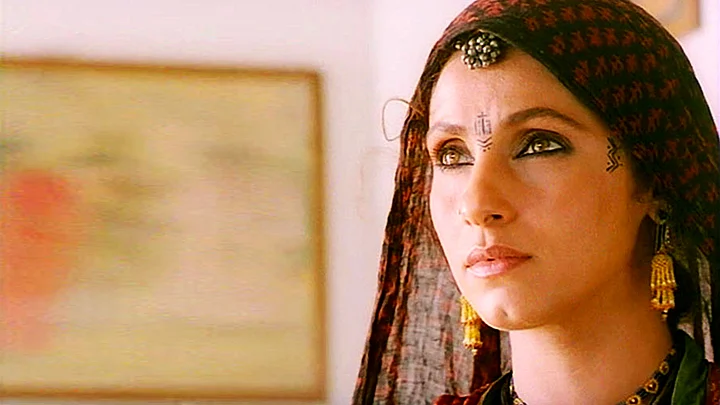Mahasweta Devi was a literary legend, a formidable social activist and a feminist. Apart from her literary legacy, she also left an indelible mark on Indian cinema, through film adaptations of her short stories and novels.
Rudaali (1993)
Based on a short story written by Mahasweta Devi, Rudaali was directed by Kalpana Lajmi. The title of the film is a reference to professional mourners in some parts of Rajasthan who are hired by rich and upper-caste families to mourn for them. Mourning; a ritual which forces a private grief to become a public spectacle.
The film focuses on the journey of Shanichari (played by Dimple Kapadia) from a poor, orphan young woman married to an alcoholic husband to a single mother, in love with an influential Thakur’s son (played by Raj Babbar).
Shot in Jaisalmer in stunning frames by Santosh Sivan, the film starts with a zamindar (played by Amjad Khan, in his last film role) at the end of his life. He hires a rudaali, Bhikni (played by Rakhi Gulzar) who begins to live with Shanichari.
Despite all the tragedies she has gone through, Shanichari finds that she is unable to cry. Until, Bhikni leaves her and brings out a torrent of sorrow, grief and pent-up emotion. Set to Bhupen Hazarika’s haunting melodies, Rudaali is an unusual film (and an unusual story) which leaves a strong impression on the viewer.
The film is a searing insight into a woman’s life in a patriarchal and feudal order, and manages to capture the sensitivity with which Mahasweta Devi represents life in rural Rajasthan.
The film was India’s official entry to the Oscars and Dimple Kapadia received a national award for her nuanced portrayal of Shanichari. Unfortunately, Amjad Khan died during production and the film, upon its release, was dedicated to the thespian.
Hazaar Chaurasi ki Maa (1998)
Revolutions driven by ideology are also driven by living, breathing men and women. In her novel Hajar Churashir Maa written in 1974, Mahasweta Devi explores the lives of the men and women who are caught up in the Naxalite revolution in 1970s Bengal.
Directed by Govind Nihalani and released in 1998, the film adaptation of Devi’s novel starts with a phone call made to Sujata (played by Jaya Bachchan), a religious woman living an affluent life in Calcutta. She is called to identify the dead body of her son, Brati in the hospital. Except when she reaches there, she discovers that her beloved son and his entire life is now reduced to a number: No 1084.
Wrestling with issues of class differences, police brutality, the complexity within a Marxist ideological revolution and the capitalist concerns of the middle class in Calcutta, the film follows Sujata as she tries to understand her son’s life and his politics. There are many moments in the film which incisively critique the elitism and apathy of the middle class, but none is more forceful than the scene in which Sujata walks in at a party in her home.
Depicted through a voice over, she is disgusted at the way her friends and family party recklessly, while being oblivious of Brati and his friends’ sacrifice and the suffering they faced in the course of their struggle.
It is a seminal moment, captured with unerring nuance by Devi’s words, and translated onto the silver screen by Nihalani.
(At The Quint, we question everything. Play an active role in shaping our journalism by becoming a member today.)
